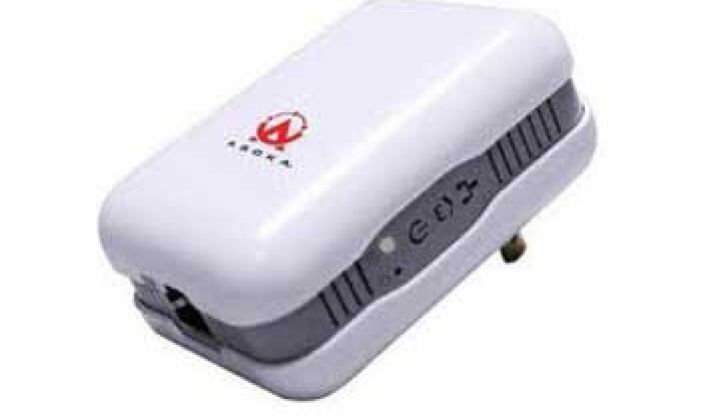It wasn’t a surprise when Verizon moved into home automation services last fall. In fact, the play to connect security and energy services for its FiOS customers was expected as large telecoms try to get piece of the home automation pie.
The appeal of working with service providers, which have millions of customers and aren’t afraid to operate inside of the home, has various home energy vendors salivating at the opportunity. Asoka Corporation is one of those vendors, although it feels it has a unique appeal to court telecom behemoths.
Asoka is a powerline communications services company that sells hardware and software for broadband into the home and internet protocol TV (IPTV). Its suite of products is already being used by some of the biggest names in the business, including AT&T, DirectTV, Comcast, Rogers and Motorola.
A few years ago, Asoka talked to their clients about what else the firms wanted the products to do. Swisscom, one of its largest clients, noted that the CEO wanted to promote energy savings and green technologies. Other service providers had similar edicts. Asoka took that information and tweaked its adaptor so that it could also do energy management.
“Service providers get it -- they move a lot faster, they know networking,” said Eric Grubel, president and CEO of Asoka.
To gain the trust of service providers, however, Grubel said the product had to be Apple-simple. That simplicity means that there is no gateway -- it’s self-install, and like other home energy management products, it’s activated on a website. The product itself is actually a series of smart plug adaptors branded as PlugLine adaptors.
For Swisscom, which started rolling out the offering to its customers in November, people that sign up for IPTV can also opt for home energy management. Customers are mailed an adaptor that does double duty by performing energy monitoring and enabling the IPTV once it's plugged into the set-top box.
Of course, that’s just one device. Customers also get other adaptors, which any lamp, computer or other device can plug into. Some are Ethernet-connected, and others aren’t. The non-Ethernet devices connect back to the Ethernet devices via ZigBee. The home energy management package, which is priced at about $200, includes two Ethernet adaptors and three non-Ethernet plugs.
The basic service is free, which allows you to monitor consumption online and turn things on and off. There is also an advanced service for about 7 Swiss Francs (US $7.75) that includes room-by-room views of devices, mobile access, and the ability to schedule the plugged-in devices. For a busy family with a few kids, Asoka estimates the payback at about a year and a half.
Service providers are interested in the home security and energy management space, but not at a huge cost. “Some have looked at what Verizon is doing and think it’s too risky,” said Grubel. Instead, they’re still exploring what the high-value applications are that customers will pay for -- and energy services are just not a proven winner yet.
Asoka is hoping that its software-as-service pilots with a large California utility and major U.S. telecoms will help to prove the interest in the energy services. In 2012, Swisscom should sell about 5,000 IPTV adaptors from Asoka every month, and about half of those are registering for the energy service.
Utilities are interested in the service to leverage PLC for smart grid data and be able to provide strong security for any information coming from the home. Some service providers, on the other hand, want to bulk up energy management offerings and then partner with utilities to leverage that into more robust offerings. “The smart service providers know they could be in a good position to go to a utility that wants access into the home,” said Grubel.
The offering does have some shortcomings -- specifically, it doesn’t currently interface with smart thermostats, so people can’t control the largest energy hog in their house: the HVAC system. But Grubel said that feature would be released in the next few months.
Asoka is in a unique position compared to pure energy management companies because it already works with service providers in another capacity and knows that the companies don’t want to take too big a risk. The focus on PLC also makes it especially attractive in Europe, where PLC dominates. The Santa Clara-based company is also working with BC Hydro and hopes that its product will eventually be one of the utility-approved items that customers will be able to buy for a rebate through BC Hydro in the coming years.
In the U.S., Asoka is far from alone in trying to tap the telecom market. Startups like EnergyHub have released a software-as-service for service providers and home security companies to leverage. British home automation company AlertMe (with its heart in energy management) has a partnership with Deutsche Telekom, Germany’s largest telecommunications company.
There is also maybe more than one way to get to telecoms. People Power, for instance, is also going straight to manufacturers instead of consumers, although it is focusing on appliances, office equipment, set-top boxes and other consumer electronics, and not just controlling home HVAC. ThinkEco, Tendril and other companies are also working on embedded solutions that wouldn’t require a solution at the plug-load level.
It may be years, however, before embedded solutions trickle into the marketplace and then into homes in large numbers. In the meantime, both utilities and service providers will want to dabble in other solutions.



